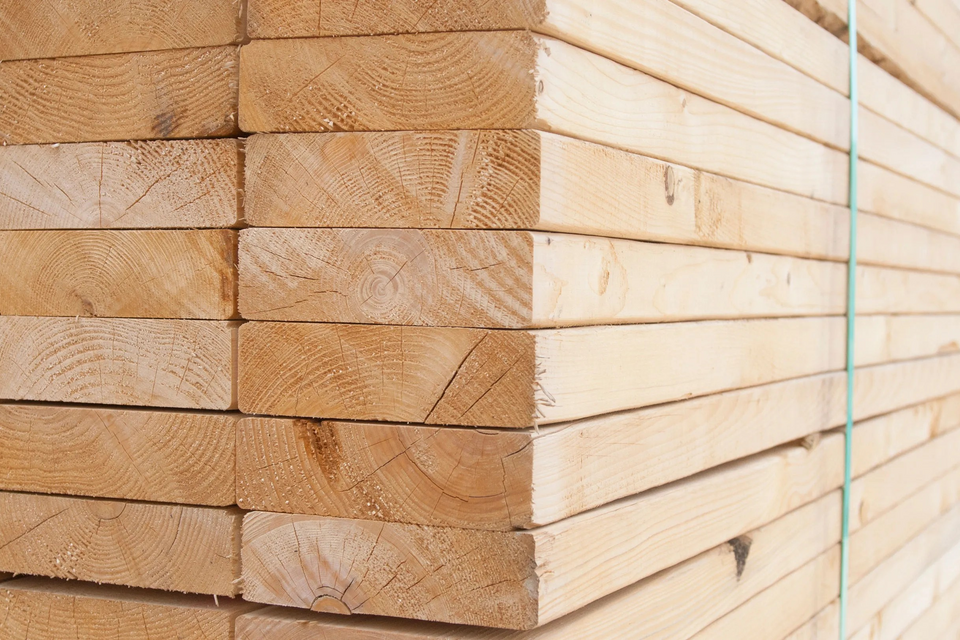With what seemed to play out as some sort of large-scale game of “Red Light, Green Light” with President Trump at the helm, the threat of a 25% tariff on Canadian lumber had everyone in the industry on pins and needles throughout March. Initially scheduled for February 4th, postponed to March 4th, retracted on March 6th and then rescheduled for April 2nd, the “on-again” and “off-again” uncertainty of if or when the tariff would be imposed repercussed throughout the supply chain, rendering much of what was published pricing to be obsolete for a while as both buyers and traders were flummoxed on what to pay or sell for lumber. Further calling in to question where pricing may go was an announcement from the U. S. Department of Commerce (on the eve of Trump’s March 4th implementation of the tariff, no less) that the long-standing Countervailing (CVD) and Anti-Dumping (AD) duties levied against Canada, currently set at 14.40%, were under review and could be adjusted in May, potentially adding another 12.41% for a combined CVD and AD duty of 26.81%. Theoretically, if or when the 25% tariffs are finally implemented and if the CVD and AD duties do get adjusted, Canada could see a potentially combined figure of 51.81% to shell out for tariffs and duties. As most of us choked on the thought, fears of the implications of what this would do to our lumber supply, housing market and economy (as well as Canada’s) dominated conversations. Many theories and hypotheses were discussed and, as both sides of the border tried to strategize for the future, no one really made any forward progress as the mounting trade war carries on. Nonetheless, there is little that anyone can do other than take it day by day, see what develops, and use the best course of action at the time. Having said that, the market, although perplexed, frustrated and anxious as to how to handle the tariff and duty threats, has remained remarkably stoic, nonetheless. Currently, supply and demand are getting closer to equilibrium as, based on the economic forecast for Q2 2025 and what implications the tariffs and duties may bring, many are beginning to run their inventories a little lighter. Concern of how the economy will be affected has curbed some of the enthusiasm for future sales and, with the new tariff implementation date of April 2nd fast approaching, all seem to be remaining frozen until the “Green Light” is called. In the meantime, we are well stocked with competitive, pre-tariff priced material and ready for whatever plays out.
“Tariff Fatigue” has taken its toll as it has become quite apparent how weary our industry has become of the issue. With all the discussion of what could happen, one must also wonder what the outcome would have been if the tariff was implemented on February 4th, as initially planned. Where would we be today? Given eight weeks of time to adapt to the increases, most inventories would have cycled through by now and we’d be dealing with the new, 25% higher priced Canadian lumber as well as higher priced domestic lumber too, as “a rising tide lifts all boats”. Especially nowadays, budgets prevail so adding a 25% tariff increase to lumber can make enough of a difference in the cost of a project to knock thousands of potential home buyers or remodeling candidates out of the market. Undoubtedly, we would have seen the effects of this by now if the tariff had been implemented, damaging our already fragile building and remodeling market. Despite how frustrating the moving-target date of the tariffs has been, it’s better than having them in place and their postponement has been a true blessing as it has also afforded us the luxury of time. With their postponement, we’ve been able to network and reach out as an industry to our political leaders and fight against the tariff’s implementation. Buyers have had the opportunity to build their inventories with pre-tariff lumber, explore opportunities with new domestic and European resources, change species (primarily Canadian SPF to domestically produced Southern Yellow Pine) and consult with customers about upcoming projects and how the tariffs may potentially affect their budgets. Juxtaposed to what could have occurred if the tariffs went in to place two months ago, this period of on-again, off-again has given us the opportunity to prepare or adjust at a slower, less jarring pace. Hopefully, it will continue to be kicked down the calendar as, in the end, we’d rather be fatigued by the uncertainty of its implementation and enjoy more time without it, rather than by the damage it could cause by being in place.
To coin the Brits, “keep calm and carry on”, and that’s exactly what we intend to do. Rather than fan the flames of the drama that surrounds the tariffs, we’re looking at the issues and situations from a global perspective, consulting the best industry professionals internally and externally (and we have some exceptionally great ones), meeting regularly with our customers and making decisions that will enable us to keep business as normal as possible. Our goal is to be the resource you use to land jobs that keep you going, without interruption or penalty to your profit. Thank you for your business!
